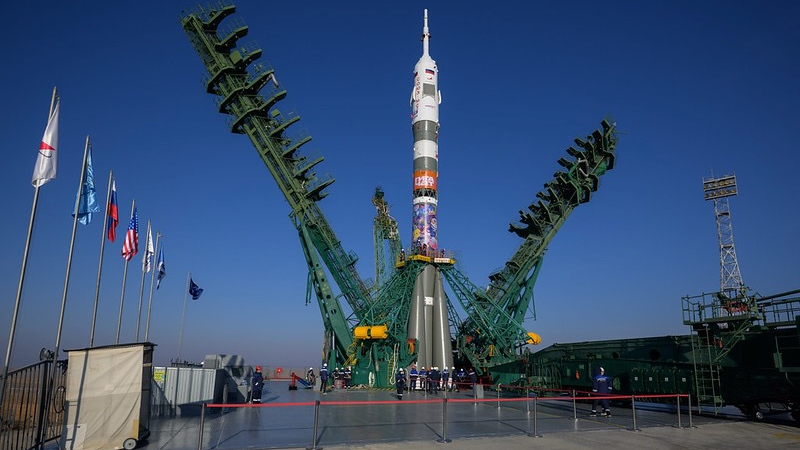Unbowed by Robot Loss, Japan's Asteroid Probe Readies For Touchdown
Despitea glitch in deploying a mini-robot onto asteroid Itokawa, Japanese spaceofficials plan to proceed in a milestone-making touchdown on the space rock toobtain samples of the object for return to Earth.
Theproblems encountered Nov. 12 with the release by Japan's Hayabusa spaceprobe of its camera-toting robot highlight the difficulty of this kind of mission. The robot probe, called the MIcro/NanoExperimental Robot Vehicle for Asteroid (MINERVA), was lost upon release from the mother ship Hayabusa.
MINERVA was successfully released, but the device appeared to start drifting away from the asteroid's surface, according to a release from the Japan Aerospace Exploration Agency (JAXA). The robot was expected to land and hop around on the asteroid's surface collecting data with three small color cameras.
Now,Hayabusa ground controllers are preparing to carry out a first touchdown onasteroid Itokawa on November 19 and a second touchdown on November 25. Themission is being run by the Institute of Space and Astronautical Science(ISAS), a space science research division arm of JAXA.
Loss of MINERVA
Japan's Hayabusa probeis now roughly 2 miles (3.5 kilometers) from Itokawa. The mission isbeing carried out nearly 180 million miles (288,923,070 kilometers) away fromEarth.
OnNovember 12--during a trial run to check out descent landing procedures--the Hayabusaprobe closed in on its asteroid target, reaching an altitude of about 180 feet(55 meters) from the space rock. The rehearsal included use of anonboard Laser Ranging Finder (LRF). It was successfully verified that thedevice is ready to handle the upcoming touchdown maneuvers.
Breaking space news, the latest updates on rocket launches, skywatching events and more!
Theseparation of the ultra-small MINERVA robot took place during the rehearsal.Ground controllers were able to confirm its deployment, with communications establishedwith the free-floating robot. The ejection of MINERVA was also confirmedby the obstacle detection sensor onboard Hayabusa, according to JAXA officials.
Separationof MINERVA was performed via command from ground control. However, during theten minutes or so until the separation actually took place, JAXA said, theposition of Hayabusa had drifted to a higher spot over the asteroid - analtitude of about 656 feet (200 meters). That being the case, MINERVA failed toplop itself down onto the surface of Itokawa.
Gravity of the situation
What happened to MINERVA is a lesson learned for future asteroid work, saidDonald Yeomans, Supervisor of the Solar System Dynamics Group at the JetPropulsion Laboratory (JPL) in Pasadena, California.
"Whilethis MINERVA technology test anomaly certainly does not take away from theoutstanding Hayabusa science results at Itokawa, it does underscore just howdifficult it will be to land upon, or drop off any instrument packages on verysmall solar system objects that have very little gravity of their own," Yeomanstold SPACE.com. The velocity required to escape the surface of such asmall beast of a rock like Itokawa is only about 13 centimeters per sec orabout 0.3 miles per hour, he noted.
"Smallasteroids would have very little influence on a landing package and because ofthe distances involved you can't joystick the package down in real time,"Yeomans pointed out. "To place a package on the asteroid's surface, thespacecraft needs to be autonomous and very smart."
Yeomans said that Hayabusa was ascending with a velocity just greater than theasteroid's escape velocity when MINERVA was released. "So rather than headingfor the asteroid's surface, it drifted slowly away and is now, I suppose, insolar orbit."
Hayabusacommunicated with MINERVA for 212 minutes before losing signal, Yeomans said,and that MINERVA did manage to image part of a Hayabusa solar panel as itdrifted away.
"Itseems MINERVA was ready to do its part if only given the chance," Yeomanssuggested.
Set of samples
Theupcoming touchdown attempts of Hayabusa are sure to offer more tips on dealingwith asteroids in the future.
Hayabusa's asteroid sampling device isinstalled on the base of the probe. A funnel-type tube called a horn will sensecontact with the Itokawa's surface.
During this brief contact, Hayabusawill fire a small metal ball at the surface at high speed. Pieces stirred up bythe impact are to be collected within a canister attached at the top ofthe horn. Specimens are to be taken from two different locations on theasteroid, with material collected enclosed in individual parts of the canister.
This container is then transferred into areentry capsule mounted on the side panel of the Hayabusa spacecraft.
Ifall goes according to plan, the space probe would depart the asteroid by early nextmonth on a course that returns it to Earth in June 2007. The sample-carryingcanister is designed to parachute into a desert landing locale in Woomera, Australia.
Hayabusawas rocketed into space from Japan's Kagoshima Space Center on May 9, 2003. Thespacecraft arrived at asteroid Itokawa on September 12 of this year.
- Japanese Asteroid Probe Apparently Lost in Space
- Japanese Asteroid Probe Deploys Micro-Robot
- Japan's Asteroid Probe Cleared For Landing Attempt
- Japan's Hayabusa Asteroid Probe Hits Snag In Practice Landing Run

Leonard David is an award-winning space journalist who has been reporting on space activities for more than 50 years. Currently writing as Space.com's Space Insider Columnist among his other projects, Leonard has authored numerous books on space exploration, Mars missions and more, with his latest being "Moon Rush: The New Space Race" published in 2019 by National Geographic. He also wrote "Mars: Our Future on the Red Planet" released in 2016 by National Geographic. Leonard has served as a correspondent for SpaceNews, Scientific American and Aerospace America for the AIAA. He has received many awards, including the first Ordway Award for Sustained Excellence in Spaceflight History in 2015 at the AAS Wernher von Braun Memorial Symposium. You can find out Leonard's latest project at his website and on Twitter.
